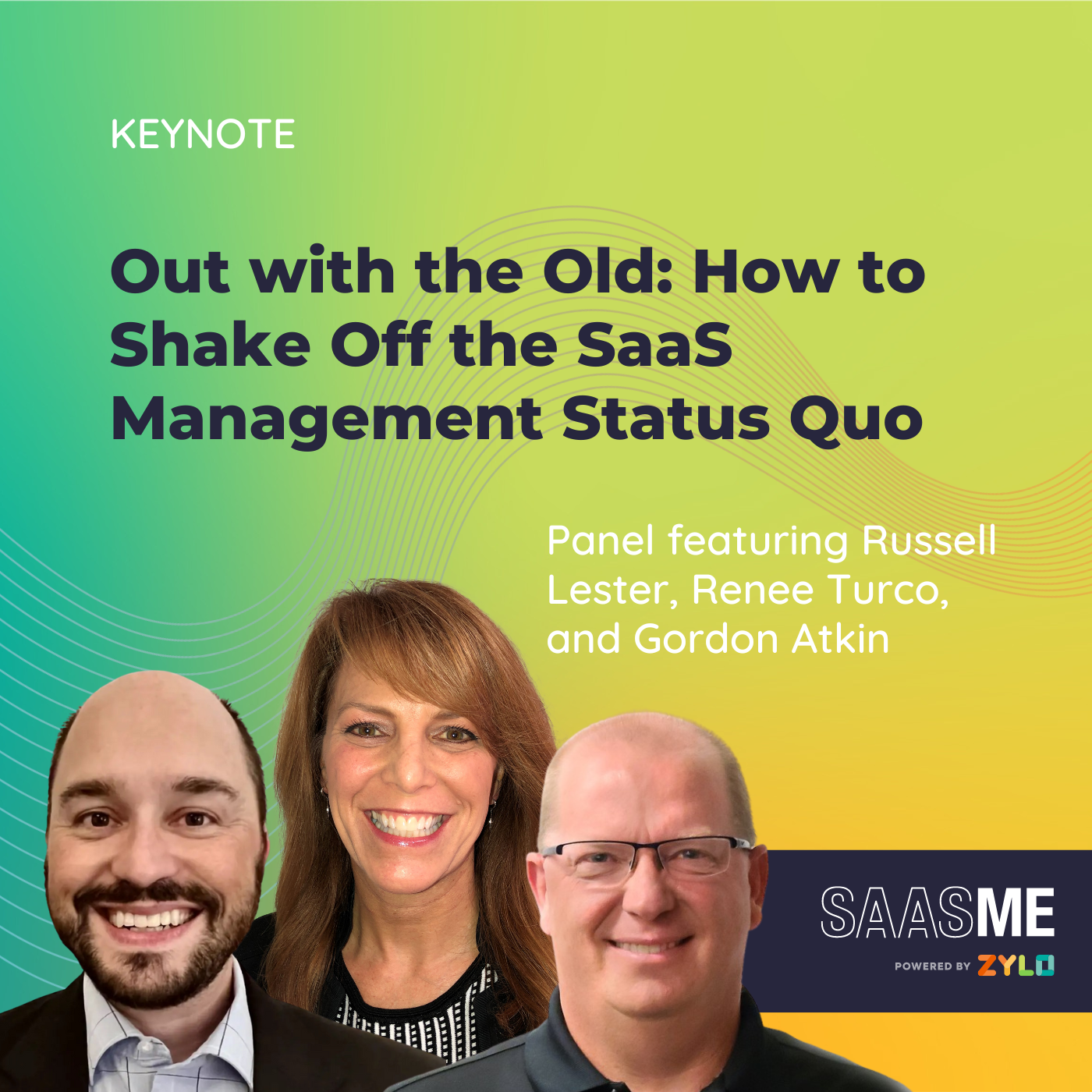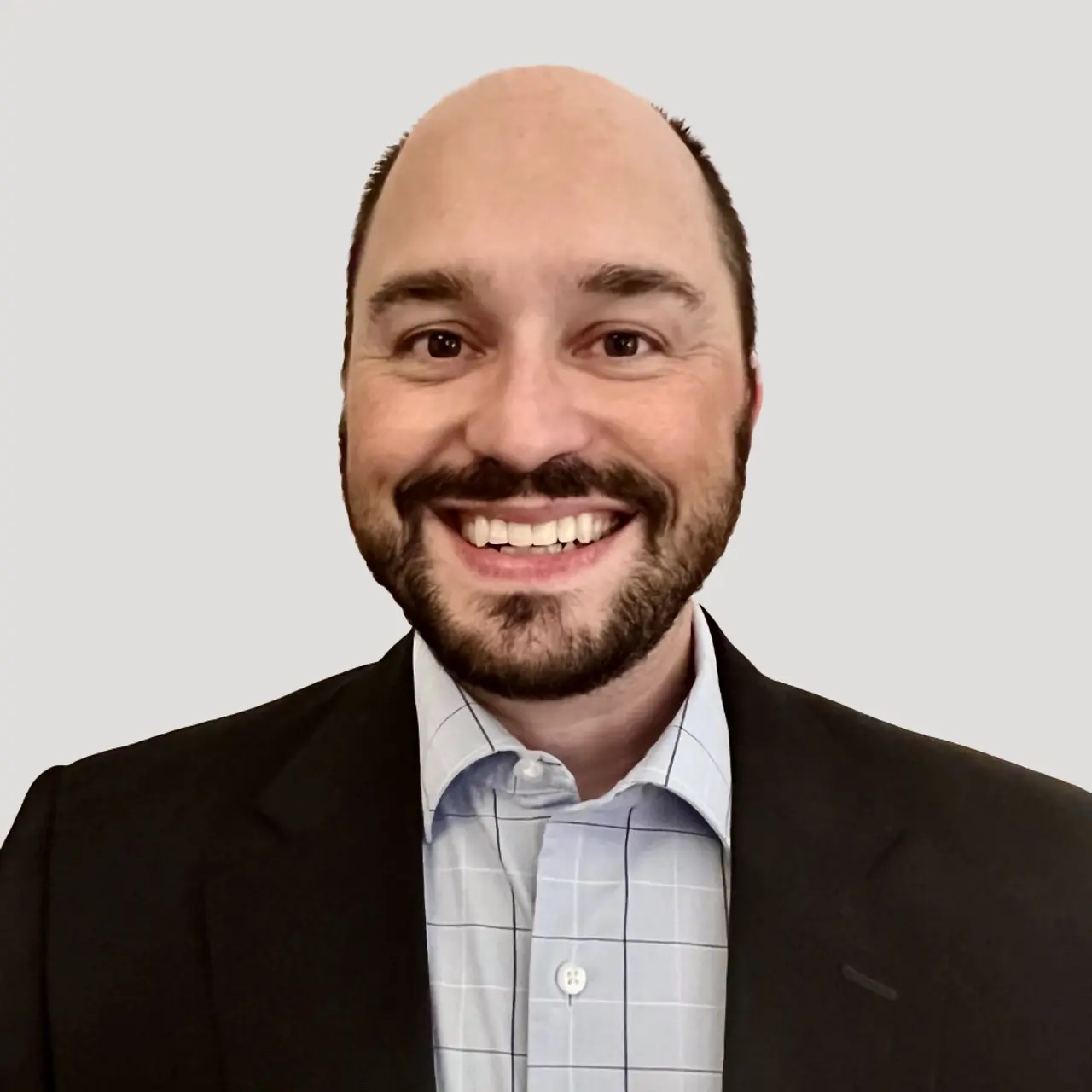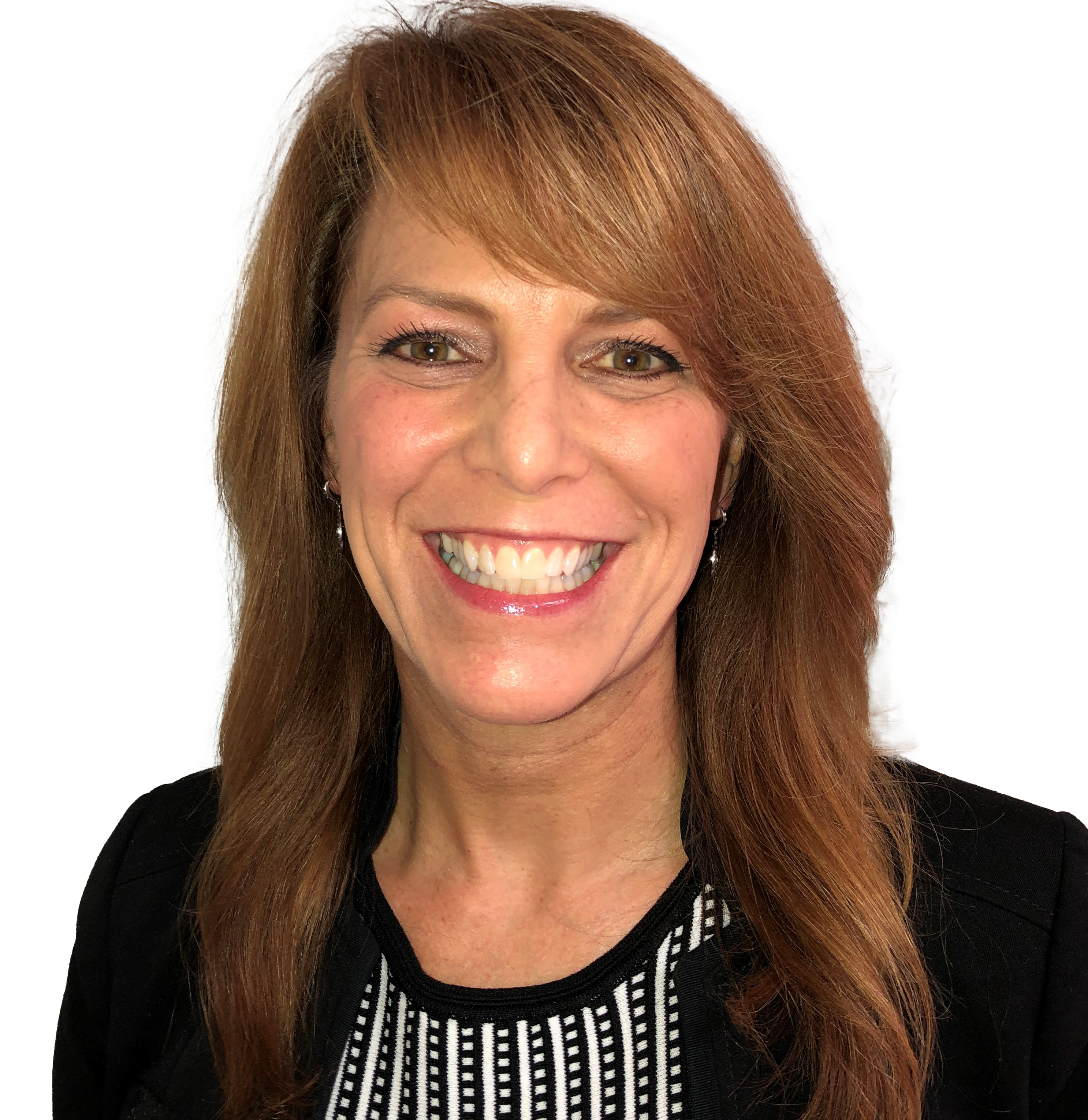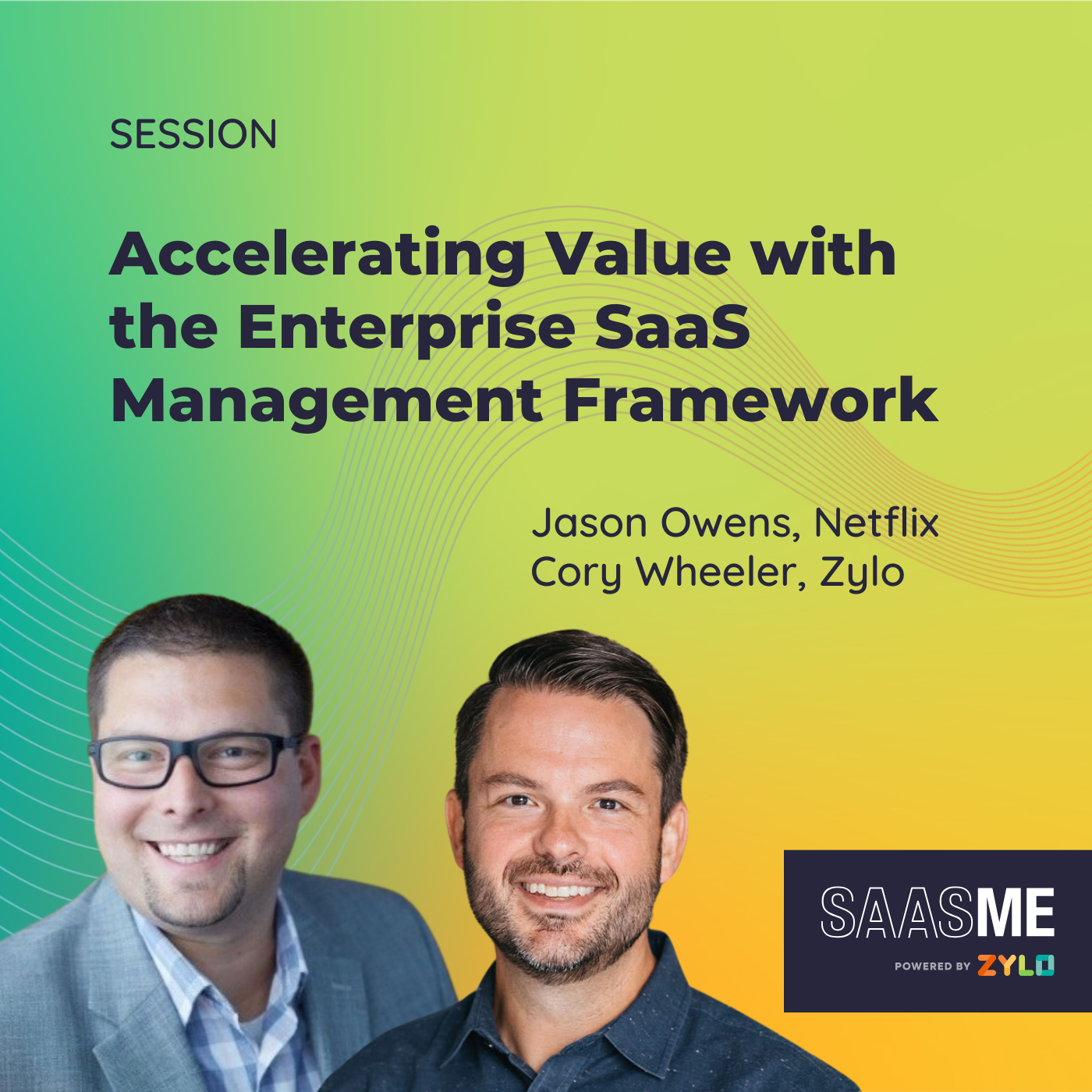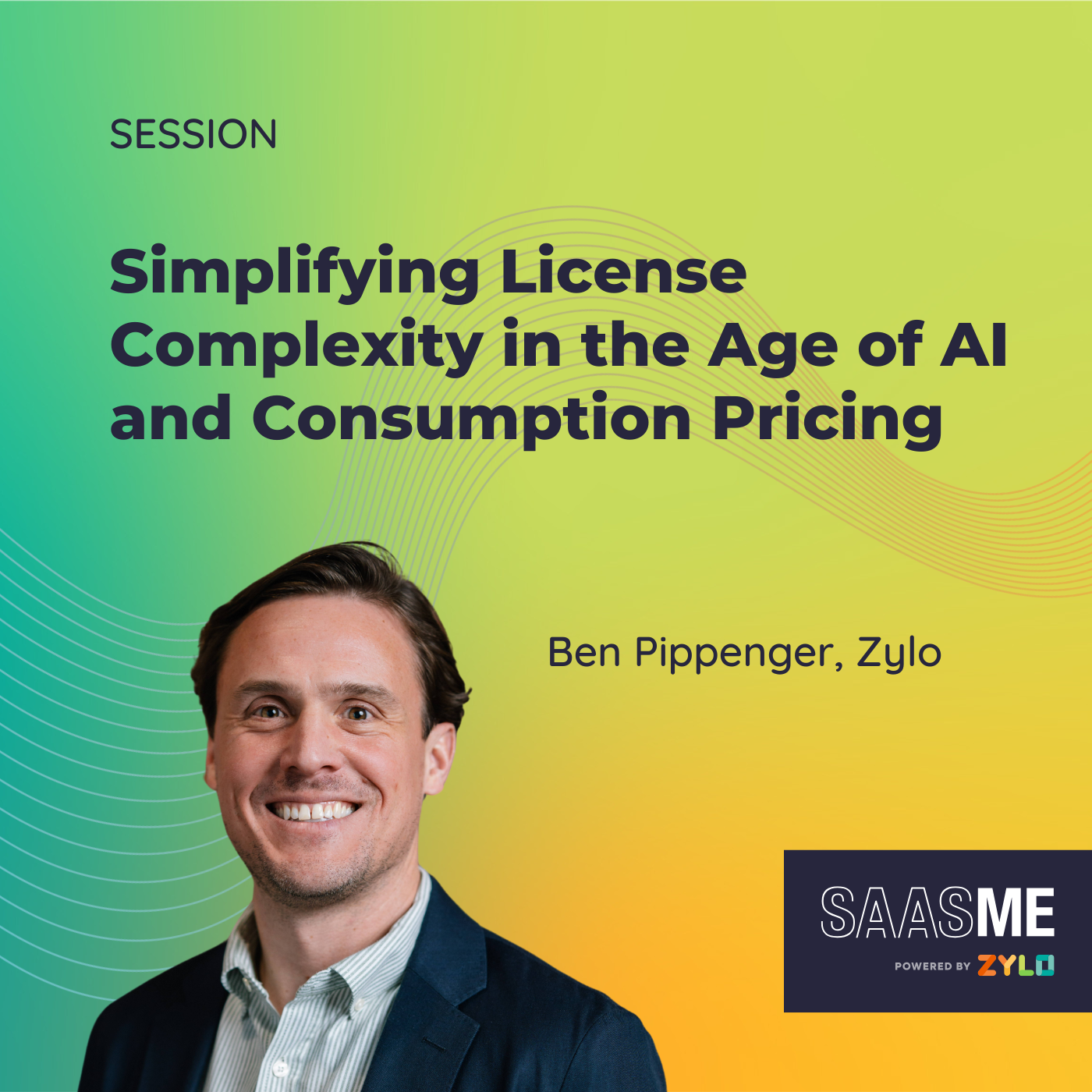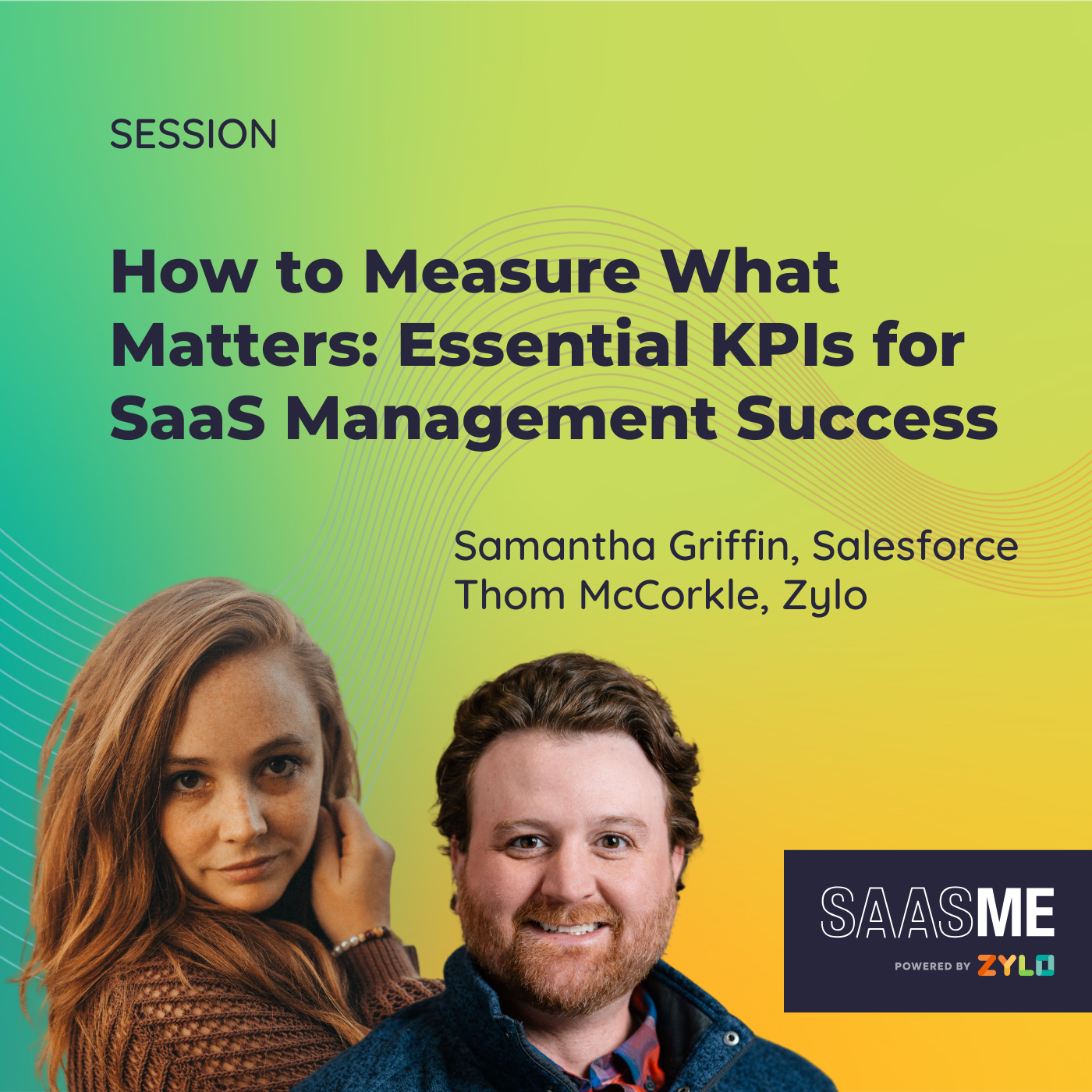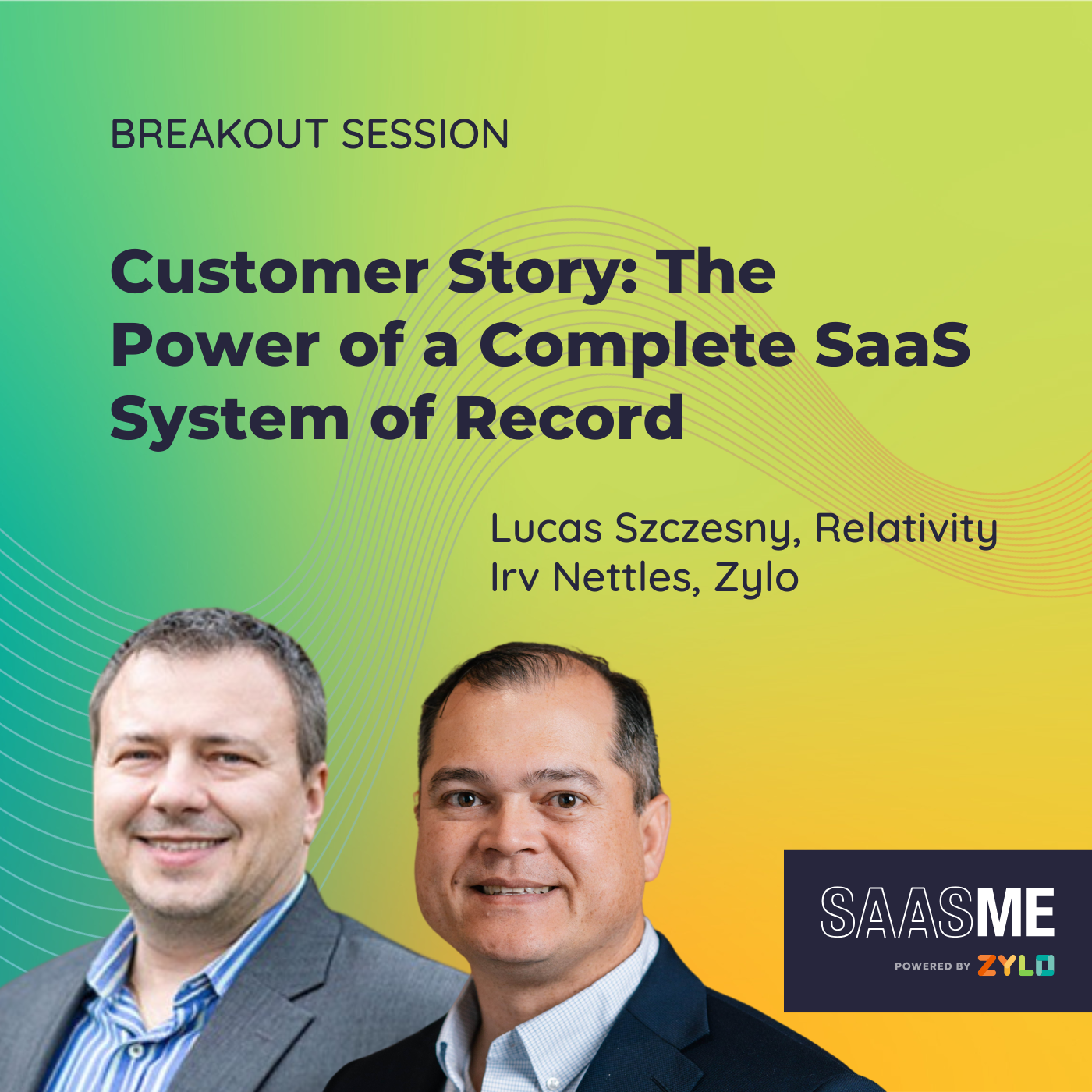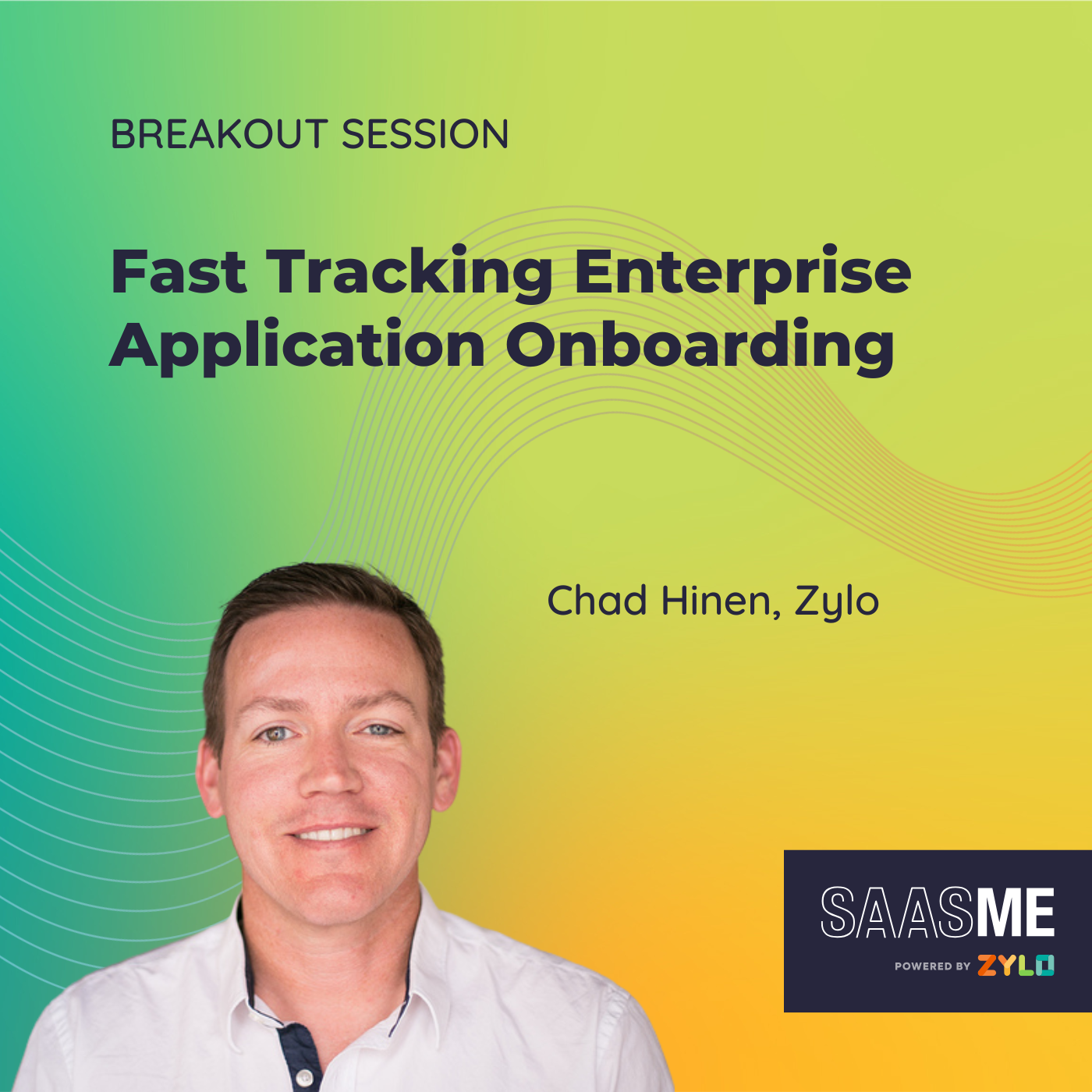Out with the Old: How to Shake Off the SaaS Management Status Quo
- 0.5
- 1
- 1.25
- 1.5
- 1.75
- 2
Terra Ickes: Hello everyone and welcome to our panel session today, Out with the Old: How to Shake Off the SaaS Management Status Quo. Meredith, thank you so much for the introduction. As a reminder, my name is Terra Ickes and I'm the principal solutions consultant here at Zylo. I will be moderating this session. Again, welcome everyone. As Meredith mentioned, it's all about shaking off the status quo today. We know that change is tough, but sometimes it's necessary. And earlier you heard from Tom Cipolla from Gartner discussing the urgency of embracing SaaS management. Businesses can't afford to ignore SaaS management any longer, and effective SaaS management requires a really collaborative effort. That's why today we're really fortunate to have a panel representing three diverse and also key perspectives in SaaS management today. That's IT, finance, and of course, technology asset management. In this panel, you'll hear how this group identified the need for change within their organizations and got started. With us today, as mentioned, we have Russell Lester, Gordon Atkin, as well as Renee Turco. Thank you. Welcome so much to this session. We're super excited to hear those unique perspectives that you have on SaaS management and how you broke free from that status quo. Now to kick things off, I'd love to, because this is also going to be a fun and informative session, hear a quick intro from each of you, your company role and a fun fact if you're feeling crazy. Gordon, we'll jump to you while we figure out what's going on with Renee's audio.
Gordan Atkin: All right, can you hear me okay?
Terra Ickes: Yep.
Gordan Atkin: Okay. Yeah, Gordon Atkin. I'm the vice president of technology business platforms at Salsify. Salsify is in the E- commerce space. We play an important role between helping brands and retailers connect. We've got a platform that does that and does it pretty well. We're considered a leader in that space. And we work with a lot of big brands. We work with most of the retailers. And happy to be part of this company. I've been here for about two years. I've been a Zylo customer three different times. This is my third time as a Zylo customer and been in very similar roles at a couple of other companies where we brought Zylo to the table because it's a pretty important part of running a technology program. Fun fact about me, I usually mention that I play the bagpipe, but this time I'm going to say I speak Italian. So if anybody wants to converse in Italian, I'm pretty fluent in it. I get to Italy quite often and it's one of the countries and languages that I really enjoy.
Terra Ickes: Very nice. Very cool. Well, unfortunately I won't be able to do this session in Italian today, but that's a very cool fun fact. An excellent way to start off. Russell, we'll jump to you next.
Russell Lester: Thank you so much. I'm wondering if you can play the bagpipe while speaking Italian?
Gordan Atkin: Yeah.
Russell Lester: Russell Lester, three- time CFO. I'm currently advisor for a company named Elate. They are a SaaS platform for strategic planning and performance management. I believe they're the best platform out there for that. You should check them out. And I'm also a three- time proud Zylo customer. We can speak more about that in a bit. Thanks for being here.
Terra Ickes: Nice, thank you Russell. Renee, it sounds like we got your audio worked out.
Renee Turco: Great. Can you hear me?
Terra Ickes: Yes. Sounding great.
Renee Turco: Great. Yay. Renee Turco, senior manager, technology asset management with AbbVie. We have been a customer of Zylo's now going on year four and have been very pleased with the team, the solution, and the growth quite actually from a functionality perspective. So we are responsible for hardware and software asset management, but of course Zylo space and SaaS and subscription.
Terra Ickes: Excellent, excellent. Well, thank you all again. We're so excited to kick this off and we're really going to start with that concept of shaking up that status quo and that's the title of this session. Now, Gordon, Russell, you both just mentioned SaaS management has been a challenge at multiple, three I think it was for both of you when it came to really building that program. And we've been fortunate enough to now be able to partner with you multiple times. And I would ask each of you, and Gordon we can start with you, how did you identify a change that was necessary in your approach and what really triggered that need for you to change that status quo?
Gordan Atkin: Yeah, I think the easy answer is by doing an inventory of all of your SaaS applications. That was the trigger point for me. The first time that I became a Zylo customer, we did an inventory of all of our applications. We did our own personal inventory, which we came up with the number I think was like 150 applications. And then we engaged with Zylo. And one of the things that you guys came to the table with was I think we had well over 300 applications through your discovery and through the inventory side of it. And so once I had visibility into what the real inventory is of SaaS within that first experience, it was just like we've got to be doing something different because obviously we can't identify... If we're only identifying 150 applications and Zylo's identifying another 150, something's wrong and we've got to change how we operate in terms of how we manage our SaaS. So that was really the precipice for us in my first experience and in the other two experiences that I had. Just doing that inventory exercise is a really easy way to demonstrate why you need to change the status quo.
Terra Ickes: Sure. And I would imagine even that, that exercise probably took a decent amount of time to even figure out that 150, which is interesting.
Gordan Atkin: Yeah, because you've got to go... I mean, not everybody has access to all of the data and to all of the systems and material that gives you insight. A lot of times when you're doing that inventory on your own, you're going to the organization in different parts. You're going to engineering, you're going to marketing, you're going to all of the different pieces of the company and saying, " What applications do you use?" And then they kind of go through the exercise of, " Well, I think we use this and this and that," and they do their best to give you their story. But at the end of the day, even the finance, when you're looking at it through a finance lens, it doesn't tell the complete story of all of the applications. It is time- consuming and it's nice that there's a solution like Zylo that can actually do it in a very easy, quick way to give you the whole story of all the applications.
Terra Ickes: Yeah, excellent. Thank you for sharing that. Russell, we'll move and ask you the same thing. In those multiple opportunities that you've worked with us in the past, how did you identify a change was necessary in your SaaS management approach?
Russell Lester: Yeah, great question. So SaaS management is the right thing to do for any stage business, and I had a good opportunity to be part of three different use cases. The first use case was a mature, high- growth SaaS business that had years of tech debt and a variety of different technology solutions that had been attempted, put in place, different leadership changes cycling through. So in that use case, there was a layering effect of technology, some of which people had forgotten like, " Oh, I didn't even know we had that tool still." The second use case was a very high product- led growth company that was diversifying into sales- led growth. So we were standing up multiple back office systems simultaneously at hyper growth pace, which means we were selecting some of the right tools and in some cases not the right tools. And so it was an opportunity to look at the full landscape in a way that hyper growth sometimes doesn't allow. And in the third use case, it was five legacy companies coming together under one brand. And so in that use case, you have, again, overlapping technologies doing the same thing but without a clear ability to see that absent of a platform like this and absent... And it's not just the platform, it's the mindset and it's the people and processes that you put in place to be able to unlock that opportunity and gain that visibility. So three different instances, and in all cases SaaS management was paramount.
Terra Ickes: Yeah, that's really great. What's interesting, we look at challenges that a lot of folks have and the symptoms are very clear. In either of those scenarios, were there clear business impacts that you said if we don't do X, Y, Z and change, we'll continue to see this outcome for the business that is undesirable, if you will?
Gordan Atkin: Yeah.
Russell Lester: Yeah.
Gordan Atkin: Go ahead Russell.
Russell Lester: Yeah, I mean for our case it was redundancy of platforms or tools means cost. So in finance we're worried about cost containment, we're worried about stemming cash flow bleed, but also process inefficiency. So if people are using multiple systems to accomplish the same thing, onboarding is more complicated, training is more complicated, data management is more complicated because the systems may not be talking one to another. Really, it's just a cornucopia of challenges when you inject complexity into your tech stack. And so I would say efficiency, cost containment, and simplification of processes.
Gordan Atkin: Yeah. And I'd agree with that. I think though drilling down a little further on the cost side of things, when you look at the top expenses for companies these days outside of the headcount costs, benefits, things like that, SaaS spend is one of the top costs for any organization in today's world. It used to be you could capitalize a lot of those costs and now with SaaS it's an operating expense. And so many, if not all companies are paying attention to the cost of software and software as a service. And so you've got to be out in front of it. You have to be paying attention to it, you have to identify ways of how are you going to contain it the way that Russell spoke about it. You have to contain it, you have to manage it, you have to be in a place where you can not just manage the number of applications but the cost of it as well. And that's where procurement plays a really important part as well.
Terra Ickes: Yeah, excellent. Thank you. And Renee, we'll go to you and kind of hear the same journey. Where did you start? How were you managing SaaS management? What was that very kind of compelling event that drove towards status quo change there?
Renee Turco: Yeah, so for us, we were on the infamous spreadsheet for more than a thousand renewals on an annual basis, almost 1, 600 applications in the environment. We are a very large company. And at the time that we had started looking at a way to look at SaaS management tools, we were also in the midst of the biggest acquisition that AbbVie had ever been under. And so we're doubling in size. We don't have a handle on all of our SaaS- based software. We only know what's in the spreadsheet and there are missed renewals that had occurred. We had inconsistencies in reporting and had no idea what our shadow IT from an expense perspective was because we didn't have insights into corporate credit card spend of software. And much of that, even for items that we did have insight to, if someone were to code it incorrectly through the purchase order and it wasn't coded as software, we wouldn't have insight to that. And those are some key aspects that Zylo has brought to the table for us through the Zybrary. Even if somebody codes something incorrectly from a spend perspective, we still have visibility to that now, which we didn't have before. So there wasn't one aspect. We just knew that our SaaS portfolio was growing tremendously and we had no visibility. And so from an asset management perspective, we didn't have the same opportunities that we do now to optimize that spend to do further contract consolidation with our procurement and vendor management teams. And from an audit perspective, and that is one of the aspects from a risk, our team is responsible for all third- party publisher audits. And if you don't have insight not only to what you're spending but what you're consuming, there's a lot of gaps. And those events, put that all together, and we needed a SaaS management platform.
Terra Ickes: Yeah. So from missed renewals, some pain there all the way to risk, it makes sense. I think we all agree spreadsheets, duct tape, they're in 2023. We don't want to bring those forward with us. And that's everything that we're talking through today. But when we look at your perspectives and how they're different, I'm really interested to hear... We've got IT, finance, technology asset management. When you were ready to invest in this and break that status quo, how did you get other leaders in the organization on board and what steps did you take to really champion this effort internally? And Renee, we'll start with you here.
Renee Turco: Sure. I mean, I hate to say it, but audits. There was a lot of risk that we didn't have insight to. And from a leadership perspective, it was a great sell to ensure that from a visibility and consumption perspective, we had a much better handle on that. From a financial aspect, we knew there was ways to spend, but again, without a tool and without visibility to that, it was just a presumption and we needed some data and some facts to support that. So very quickly we were able to get leadership on board and to start looking at different platforms.
Terra Ickes: Excellent. Russell, how about you?
Russell Lester: Yeah, it begins with helping people understand the opportunity. I agree with everything Renee said, but also the finance function is about maximizing runway, unlocking liquidity, ensuring that you're achieving the proper ROI on investments. And a lot of people don't think of your SaaS spend in that way. A lot of people also don't realize how much waste and how much additional liquidity can be unlocked if you reduce that waste. And so a high- level opportunity sizing is one of the critical components, but also finding that peer, that stakeholder to be the co- sponsor with you. And in my case, in all three instances, the IT organization was that partner that we agreed that we mutually wanted to solve this together. We went in as a unified force. And for us, inaudible rolled into the finance organization. And so really you had the inaudible working all in concert together. And the last is the center of table concept, that the dollars we free up through SaaS management goes to the center of the table so that the executive team can then say what do we need to do in service to our strategy and redeploy those unlocked funds. So it's not that finance and IT get to sit on those funds that are unlocked and it's all ours. It's redeployed, center of table, back to the company to spend in the best way possible to maximize ROI.
Terra Ickes: Excellent. I love the center of the table. Gordon, how about you?
Gordan Atkin: Yeah, I mean very similar to Renee and Russell. I mean, the risk side of it is interesting. I haven't actually leaned on the risk side of it. Listening to Renee, that makes complete sense. I run our information security team and that's one of the key tasks that they have is to understand all of the touchpoints that we have within a company including all of our vendors. And so that's a risk that can be reduced and eliminated, not eliminated entirely, but certainly reduced down to a very low risk by having something in place to demonstrate that you know exactly all of the relationships that you have within the business. My first experience with Zylo really leaned into the ROI side of it and that's what I lean into going forward now is the ROI side of it. So when I first became a Zylo customer, actually just shortly before becoming a customer, I contacted Gartner and I said, " Gartner, what do you know about this space?" And this was seven, eight years ago and it was super brand new. I think I was customer number nine at the time, and so there wasn't a lot of research on the topic. But when I engaged with Gartner, one metric that Gartner gave me that I still kind of hold to today, I don't know if the metrics changed, I haven't really updated my research on it, but one metric that they gave me, they said, " If you pay attention to it, in your first year of focus, you can usually save anywhere from 10 to 30% of your total SaaS spend." And that's what I went to task with. And I'm kind of a conservative person. I don't want to sit the bar at 30% savings, although that would be nice. I set the bar more at like 10% and whatever we got beyond 10% was kind of like center of the table type of stuff where you can put it back and go to other programs. And that's what I've carried forward. That's the commitment that I made at Salsify. When I put this on the table at Salsify, I said, " I'm going to commit to 10% savings, bottom line savings." Everybody was on board because in this economy when people are losing their jobs and companies are trying to find alternative ways of saving money, a million dollars is a meaningful amount of money. It is straight bottom- line savings. It saves people's jobs. And so that's what you can lean into and you can become a champion of not just this SaaS management program, but just kind of like the financial help of the company going forward.
Terra Ickes: Yep, yep. It has me thinking with you're all agents of change that have been successful in really shifting the paradigm of how SaaS is managed as part of your organizations, but I'm sure every step of the way wasn't maybe easy. What are the biggest roadblocks that you ran into, if any? And some of those have to do with inertia and would love to hear what if looking back you could say, " I would've done this differently to better shepherd this change in the organization"?
Gordan Atkin: I'll start. So I think... I don't know if I would've done anything differently to be honest, but what I will say, you're going to have some resistance and the resistance usually comes in the form of, " I like my application, don't get rid of it." That's usually where I see the resistance. And so you have to have an attitude. I really like the opening keynote from the Gartner analyst. He said, " Look, shadow IT is not going away," and he's 100% correct. There's going to be applications throughout every company where IT may or may not be involved. And so I think the more that you can demonstrate a partnership across the entire business, that this is healthy for the organization, and get the number of applications down from if you have seven of web conferencing tools, narrow it down to two or whatever the goal is, but just demonstrate a willingness to partner and demonstrate the help that it gives to the company. And in many cases you can talk about the jobs that it could save in today's economy for a lot of different organizations. And so I think that's what I would continue to focus on is just being a partner and advocate for doing what's right for the company, for the business, and really leaning into... Don't be a heavy hand or let this be like, " Hey, we're doing this with or without you." It's just like you have to find an easy way to negotiate the work with the stakeholders who are impacted inaudible program.
Terra Ickes: Sure.
Renee Turco: Yeah, I couldn't agree more with Gordon on the whole application overlap. It's great to go down that path and we had done that right out of the gates. What I would change is I would've gone more from the financial aspect because we were able to show that ROI very quickly and once we made that shift, we were also able to establish governance. We got better buy- in because you could unequivocally show the financial payback without having to go and say, " Hey, you have to change your application because it makes sense for the company." That's probably been our toughest education and we've had very little churn there to be honest with you. But you show the whole financial aspect and people, they come to you asking questions, " What can we do differently? What can we do better as an organization?"
Terra Ickes: Yeah, that's great. Tools are sticky and the time to value and sometimes rationalizing those can be challenging. Okay, I'd love to hear when you talk about the financial aspects, even if it's a couple bullet points on what kind of those key activities that were done to execute against that work.
Renee Turco: Yeah. So Zylo gave us the first insight to corporate credit card expense of software. We never had that insight before. And it was very telling for some of our larger applications. Not only was there high credit card spend, but we had enterprise applications, or enterprise agreements for some of these applications. So it was a complete waste. There were click- through agreements that people were just using their credit card, clicking on and not realizing that they were putting the company in a very adverse position as a result. So you kind of, again, put that risk and financial aspect together and we got a lot of quick wins.
Terra Ickes: Excellent. Now I think Russell, I'd be interested to hear based on what you said earlier about this partnership with IT that has been consistent is that right- hand man or woman that's going in and helping transform staff in the organization. Can you walk us through the key ownership and the activities that drove the most value in an example of where you were in constant collaboration with IT as part of your SaaS management program, what the focus was?
Russell Lester: Sure. At each of the three companies, procurement was at a different stage or life cycle. In one case it was stood up and owned by IT. In another case it did not exist and we were trying to prove a case for the need for procurement. And in the other case it was owned by finance but emerging. And the managed services offering from Zylo is like, I didn't give my funny fact earlier, but I'm a sci- fi nerd, so they are the Jedis of this discipline. And the benefit of managed services, using managed services is you're getting a procurement expert that sees lots of at- bats, right? Lots of opportunities to see renewals come up. And the initial heavy lift that was so hard and some of the tough part of the process along the way that required partnership with IT was the initial visibility into the contracts themselves and identifying owners of the application because if we don't know what our agreements are and we don't know who owns them or who needs to make a decision about them. And so just the process that Zylo managed services walked us through to track that, to do the heavy lifting, to track down those contracts, partner with IT, agree who owns which app and embed that as part of our always- planning process, not just during budget season. It's too late. You don't just manage this during budget season. You manage it year- round in partnership with IT. And I love hearing finance come up from some of the other functions. It's like finance for the win because it is all about the bottom line savings, but it's also helping people understand at the same time you are driving liquidity for the business, you are transforming the mindset and the processes of the business. And I think the change, shaking off the status quo actually begins there with the mindset shift.
Terra Ickes: Yep. And what you're kind of getting to was my next question. This is also all about momentum, right? Defining that program, putting a tool in place, it's not as easy as just hoping folks will use it. You've got to really impact from a change management perspective the day- to- day of folks and make sure that you maintain that momentum. Gordon or Renee, do you have any thoughts on how you've been able to successfully do that in collaboration with the organization to make sure that you don't go back to what that old status quo was?
Renee Turco: Yeah. For us, it's been more about that whole premise of SaaS is not going away and it's growing more rapidly and publishers are making it more difficult to even manage. So just from a financial perspective for AbbVie, the last three years have been very telling for us. We have over$ 400 million of software in our portfolio. 2021 and 2022, that spend was about 50%. 2023 was a really pivotal year for us. 78% of our software spend is in the SaaS arena. And being able to report on that and show that difference and along with the increase in audit and compliance and regulation, that momentum alone just keeps growing and keeps thriving for the importance of us knowing what do we have and how are we managing it.
Gordan Atkin: Yeah. For me, I think the way that we're keeping the momentum going is we've implemented a decision- making framework, Salsify Rapid. Many of you might be familiar with it. So in the rapid decision- making framework, we came to the table with everybody and said, " Look, Gordon owns the D on all software." So that helps. But what I don't want, again, going back to my previous comment, I don't want it to be the heavy hand that just says you have to do this and this is why. I try to be a little innovative and forward- thinking on how can we improve the experience for the end user, the end customer, how can we make the procurement side of it easier, more open, more streamlined? We've implemented and streamlined some of our new supplier processes. We've gone from Google Forms and things like that to now we have them embedded, workflows inside of our procurement platform. So I'm trying to be thoughtful. I have user guides, I have videos. I tried to be proactive with the company as much as I possibly can to say, " Follow these guidelines and it'll be easy. And if you don't follow these guidelines, then it gets a little harder." But I try to at least try and keep that momentum going so that people feel that there's less friction involved in the process and that it really is, it's running itself. If you can remove the friction, the program will run itself, but you have to be willing to introduce some of those ways that reduce that friction for the end customer.
Terra Ickes: And you bring up a good point with the idea that user experience, calling it colleagues and folks at your company being those users, is what is essential to the success of the program. Hopefully those tools or those folks that are interacting with this tool are also seeing the business impacts, whether it be in their own role or more broadly. And that brings up our next question. If you were to look at the biggest benefits and how they're measured that you are receiving with the SaaS management program, what would you say that that is? And Russell we'll kick off with you again.
Russell Lester: Well, the obvious answer is reducing your cost of capital, freeing up cash flow, unlocking investment dollars, reducing proliferation of tools that don't belong in the tech stack. But those are the obvious answers. The less obvious answer is that this SaaS management opportunity is actually the singular window into where your company needs to focus priorities for the business. Now that sounds like maybe an overstatement or overreach, but think about it for a moment. As leaders across your business are trying to solve for improving the customer journey or whatever part of business they own, what do they reach for these days? Tools. And those tools manifest as procurement requests and suddenly we start spending money on things and we need to be able to step back and say, " Did you realize that there are this many different project management tools, this many different customer listening tools, customer surveying tools, data and analytics tools?" So when you use your SaaS management process to actually give you that lens into how to improve the operation of your business, you're actually elevating procurement to the strategic seat it belongs and you're empowering the IT organization to be thought partner with finance, and you're probably going to reduce spending money on bad things because everyone can lock arms and say, " We agree, these are the top three things we can do to improve the customer journey and these are the tools we need to do it." And so that's the biggest benefit.
Terra Ickes: Yeah, that's great. I think the move from reactive to proactive unlocks everyone's self- actualization in their role, their ability to do their job to that best degree. Renee, I'd ask you the same. What do you think of in terms of biggest benefits realized biggest and the way that your team has thought about measuring those?
Renee Turco: Yeah, so from my team's perspective, from an asset management, it's all about optimization and avoiding spend. We've already reaped the benefits. We went ahead from a savings perspective since we've used Zylo now for four years. We've squeezed a lot out of understanding those opportunities in our portfolio. But now it's understanding when we have new demand come in, do we have other applications that already provide that functionality? And if so, how do we educate those team members not to go forward with that purchase because we already have something available or we have licenses available because we're doing the re- harvesting and Zylo can show us what our current consumption of those applications are? So it's all about the cost avoidance and understanding from a contract agreement perspective are there further consolidation opportunities? Because again, publishers aren't going to make this any easier for us to measure, so we have to be in front of that, be very proactive and understand what's in the environment, and then more so what's our business doing from a roadmap perspective, how does that overlay into what our current portfolio is and how can we assist to shift that whole mindset of consumption?
Terra Ickes: Great. It sounds benefits in the way also of paradigm shifts, I think, in the organization that are significant. Thank you, Renee. And Gordon, do you have any last thoughts on the benefits and how you're measuring them today and what you think is key?
Gordan Atkin: Yeah, I mean, Zylo as a platform has so many benefits. As an IT leader, there's so many things that you can tap into. You can tap into benchmark data for example. That's a huge benefit. And I know that benchmark data's becoming more and more open, but just having access to what should we be paying for some of these applications is a huge benefit. You have the benefit of being able to track some of the savings. You can do a full- on savings tracker and show the growth of your savings over time. That's a huge benefit. The benefit of having workflows associated with your renewals. And so we talk about, at least I talk about SaaS management as a program. There's just so many benefits to the whole overall program of being... Negotiation services. If you need that as part of the Zylo experience, that is a huge benefit. If you don't have a full functioning or if you need some augmentation on your procurement services, that's a huge benefit. And it's just there's so much information there that... I'm a big believer in the power of information and sharing that information with those who need it and being open with it. And you can enable the business to be more productive and less restrictive. And they can be more innovative with that information. They can make their own decision. It doesn't have to be all through an IT centralization effort. It can be shared across the entire business.
Terra Ickes: Yeah, I think what I've heard from everyone and what you're getting at here with, it's like there's a direct line from key capabilities to a few buckets that we usually see consistently. And I've heard of themes here, a reduction of risk and improvements around efficiency and potentially productivity, and then also a cost avoidance and savings. It seems like those are kind of the themes we've seen surface in terms of how exactly the change in day- to- day and the capabilities available ultimately lead to those outcomes. What I want to kind of leave us with is if you were talking to someone at a company that was hoping to or considering making a change in status quo, what would be the one thing that you would say to them to think about, look forward to hopefully make them successful in that, in their endeavor?
Russell Lester: Yeah, so I guess I'll start and I'll start by saying if the goal of this session is to shake off or shake it off, I would say bad spending habits, you got to break, break, break. Scarce resources, it's going to take, take, take. So new processes, tools, and mindset you got to make, make, make. And if you do those things, you can shake it off, shake it off.
Terra Ickes: That's perfect. Hey, we said we were going to make it fun at the beginning and you have made sure that we closed out on a positive note. I think for anyone out there, Taylor Swift is in the house with that reference and the theme of this session, as you can tell is closely related to that. Totally agree, Russell. Renee, anything that you would add there. That one thing you'd say to those...
Renee Turco: That's a tough one to follow, Russell. That is great. I loved the reference. But I couldn't agree more. Knowing what your organization is spending in software is absolute key. And Zylo uncovered so much of that for our organization that we were able to go for low- hanging fruit day one and just continue to optimize and really refine our different focus areas year after year, because it really is, it's spend. What are you spending out of the pocket? You can't just keep on doing the same old, same old, following the status quo. You've got to look for the new, what's your new target?
Terra Ickes: Thanks, Renee. Gordon, anything you'd add to that?
Gordan Atkin: Yeah, I mean, my advice would be a lot of CIOs in many cases struggle to be strategic with their company, and this brings you very close to a very hot topic for many companies, which is how do you optimize your overall spend? So it brings you closer to the strategy that companies are trying to execute. It brings you closer to partners, stakeholders, whatever you want to call them across the business. So it deepens your relationship and your partnership with people across the business that enables you to do not just SaaS management, but many other IT- related initiatives. When you develop those relationships, it becomes easier to have conversations around how are we going to improve your business and give you what you need? So it's a necessity. Somebody asked me a long time ago... To me, having a SaaS management platform like Zylo is a must- have. It's not a nice- to- have. It's a must- have because it enables your business in so many ways to improve in its operations.
Terra Ickes: Excellent. Well, I can't thank you all enough. This wraps our session today. Big thank you, obviously, Russell, Renee, Gordon, this has been incredible time. Your perspectives are so unique, powerful, and key as part of all of the different kind of personas that exist in potentially shaking up that status quo that we talked about in SaaS management to really transform what that practice looks like in the business. So thank you again, team. We appreciate it. Excellent job. Hope everyone enjoyed the session today. Thank you for attending and enjoy the rest of SaaS Meet.
Gordan Atkin: Thank you.
Russell Lester: Thank you.
Renee Turco: Thank you.
DESCRIPTION
Let's face it: Changing the status quo is hard. Where do you even start? This session brings together a lineup of visionary executives who transformed SaaS Management for the better. Join us for a candid discussion on how they broke free from outdated practices and why standing still is the fastest way to fall behind. They'll share concrete insights, real-world examples, and tough lessons learned. This session is your starting point if you're prepared to challenge the norms and shake off the SaaS Management status quo.
Speaker(s):
- Moderator: Terra Ickes, Principal Solution Consultant at Zylo
- Panelist: Gordon Atkin, VP, Technology & Business Platforms at Salsify
- Panelist: Renee Turco, Sr. Manager, Technology Asset Management at AbbVie
- Panelist: Russell Lester, 3X SaaS CFO

